
Note: As of February 26, 2020, 71% of the soybeans in Argentina were rated Good/Excellent. This is +1% vs the previous week. That's a big crop!
Only 28% of the beans were filling pods a bit slower than average.
Early beans: 41% filling pods
Late beans: Just 1.3% filling pods and 23.5% setting pods..............a long way to go......until late March before maturity.
Hot/dry weather the next 10 days in Argentina WILL hurt the late beans. Temps getting close to 100.
The most bullish weather of the growing season(though its late)..........but will the Coronavirus scare and crashing stock market offset this?
Crop calendar for Argentina:
http://www.soybeansandcorn.com/Argentina-Crop-Cycles
Crop Calendar for Brazil:
http://www.soybeansandcorn.com/Brazil-Crop-Cycles
The maps below are for the past 30 days, 90 days and 180 days % of average precipitation:
https://www.cpc.ncep.noaa.gov/products/Precip_Monitoring/Figures/global/n.30day.figb.gif
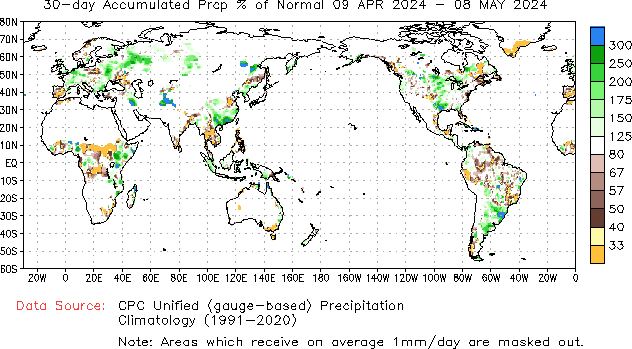
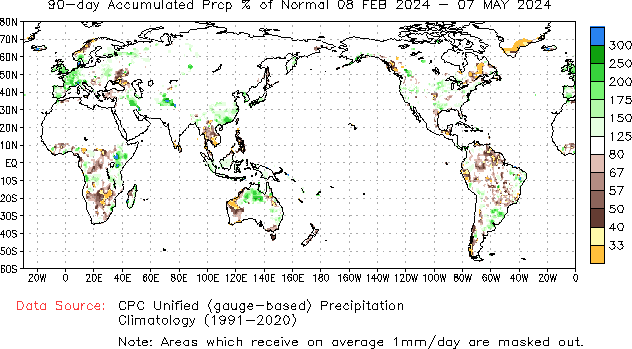
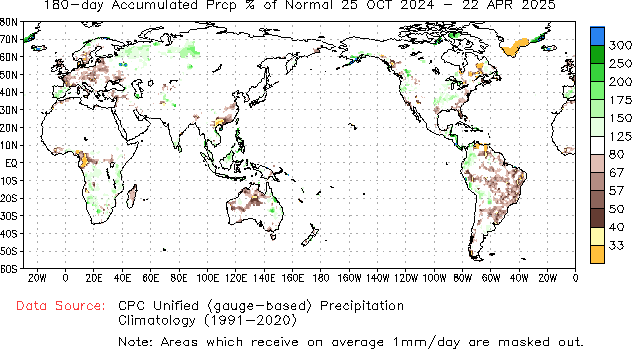
The forecasts below come from the GFS/US model.
The big weather story is in Argentina. No rain the next 10 days and temps increaseing to record heat........near 100 degrees!
This WILL hurt the late beans that are just starting to fill.
http://wxmaps.org/outlooks.php
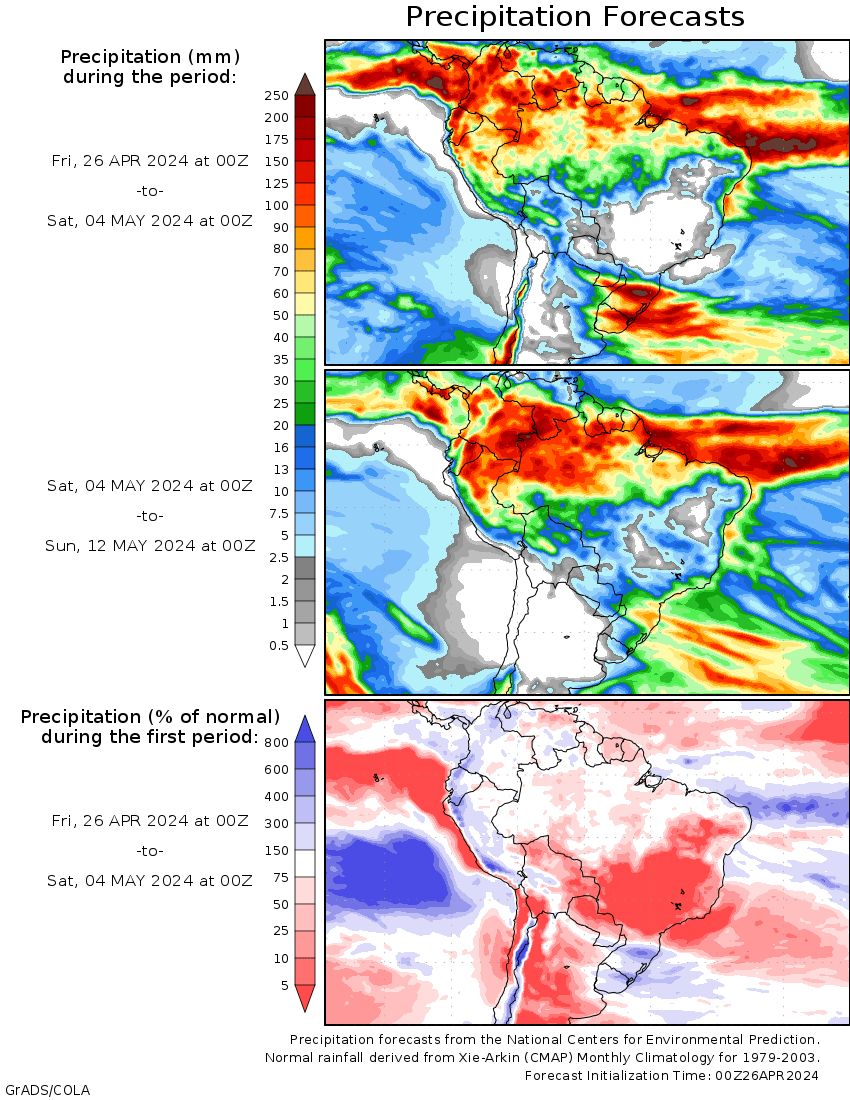
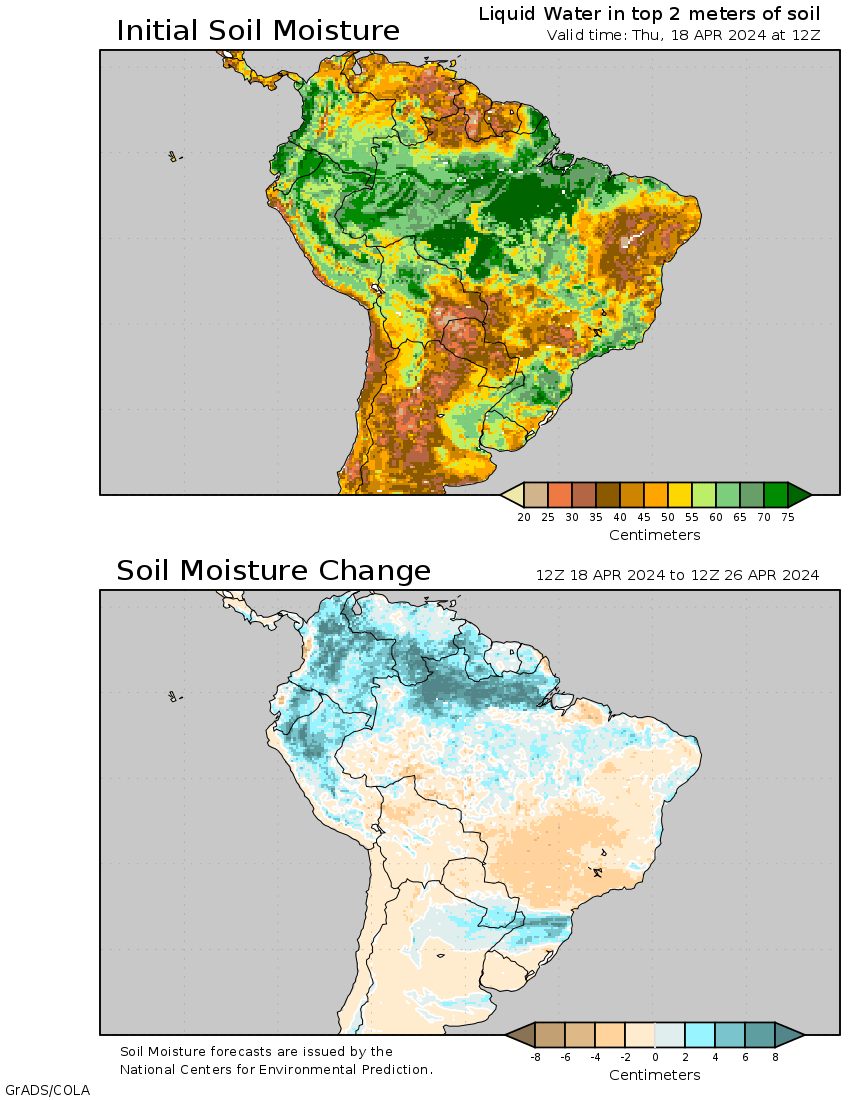
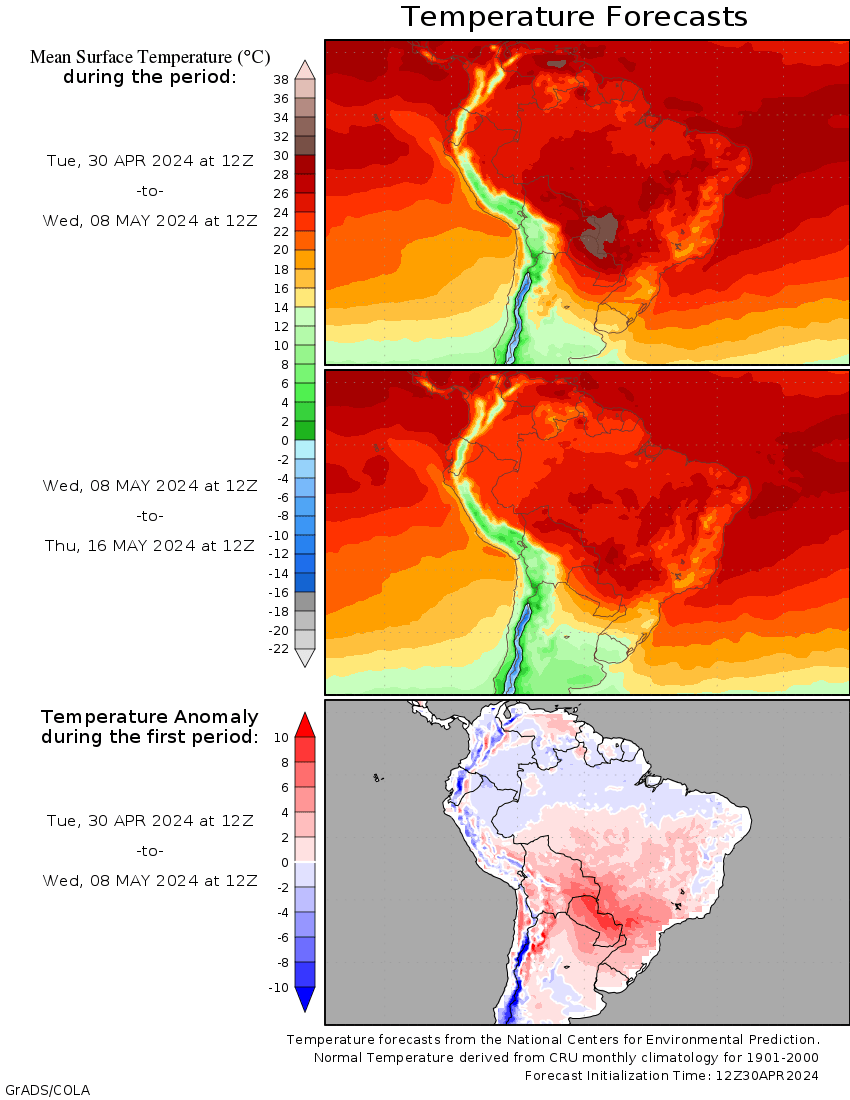
Monitoring rain/satellite pictures:
https://en.allmetsat.com/images/goes_py_suda_zoom_ir.php
https://www.eldoradoweather.com/satellite/misc/s.america-ir-sat.html
https://www.accuweather.com/en/br/national/satellite
Rain amounts 24 hours:
http://www.inmet.gov.br/portal/index.php?r=tempo2/mapasPrecipitacao
Rain amounts for longer periods globally:
https://www.cpc.ncep.noaa.gov/products/Global_Monsoons/gl_obs.shtml
Weekly weather and crop bulletin for global crops.
Some areas of Argentina and S.Brazil have had below average rains this growing season. If not for the huge increase in CO2 the past 100 years, crop conditions would have deteriorated. Increased CO2, besides acting as atmospheric fertilizer also causes plants to be more water efficient. They don't need to open their stomata as wide or as often to let CO2 in. As a result, they lose less water/moisture from evapotranspiration.
Soybeans are a C3 plant. C3 plants benefit the most from the increase in CO2.
The preceding discussion has presented the average effects of elevated CO2, but obscures important patterns of difference in response among plant species. One of the most important determinants of species differences in response to elevated CO2 is photosynthetic type. Most plant species (~90%) utilize a photosynthetic process known as C3 photosynthesis. Other species use either of two physiologically distinct processes known as C4 and CAM photosynthesis (Figure 2). C4 plants include most tropical and sub-tropical grasses and several important crops, including maize (corn), sugar cane, sorghum, and the millets. There has therefore been considerably more research on the responses to elevated CO2 in C4 than in CAM plants.
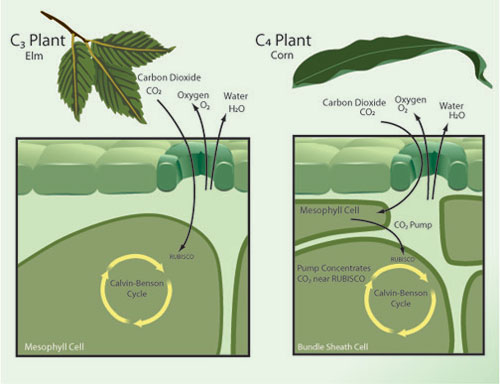
Figure 2: Each plant species utilizes one of several distinct physiological variants of photosynthesis mechanisms, including the variants known as C3 and C4 photosynthesis.
"Current evidence suggests that the concentrations of atmospheric CO2 predicted for the year 2100 will have major implications for plant physiology and growth. Under elevated CO2 most plant species show higher rates of photosynthesis, increased growth, decreased water use and lowered tissue concentrations of nitrogen and protein. Rising CO2 over the next century is likely to affect both agricultural production and food quality. The effects of elevated CO2 are not uniform; some species, particularly those that utilize the C4 variant of photosynthesis, show less of a response to elevated CO2 than do other types of plants. Rising CO2 is therefore likely to have complex effects on the growth and composition of natural plant communities."
Very wet February in northern Brazil for Goias, Minas Gerais, Sao Paulo. Wettest February in 40 years at Goiania (big city in Goias located in their soybean area) Maybe
can share some insight regarding any impact on soybean harvesting/safrinha corn planting...
Couple of things to add
About 50% of the Safrina corn is being planted after the window ffor Safrina corn is closed
Brazil corn is 20% higher this yr
If the dollar goes down our corn will be cost effective for export, maybe even if the dollar doesn't go down
20% of 4.00 dollar corn, ready to load on the boat, brings it up to almost 5.00
Hot and dry coming up for Argentina is the bullish part but it only lasts for a week.
All the models bring some good rains back in, starting day 8, which will minimize the damage from the hot and dry to the late beans that will be filling during the entire month of March.
The bullish dry period coming up for the filling Argentina beans is shrinking as the approach of the next big rains gets one day closer each day.
Now around a week away. The first few days will feature the rains in just the southern half of the Argentina soybean growing region ........missing the north, that will stay hot/dry.
Then, the rains expand north with widespread, robust coverage.
Beans in Argentina are filling this month. Hot/dry for around the next week(rains starting in the south before then) then rains return beltwide early week 2.
Coronavirus panic is what matters the most here.